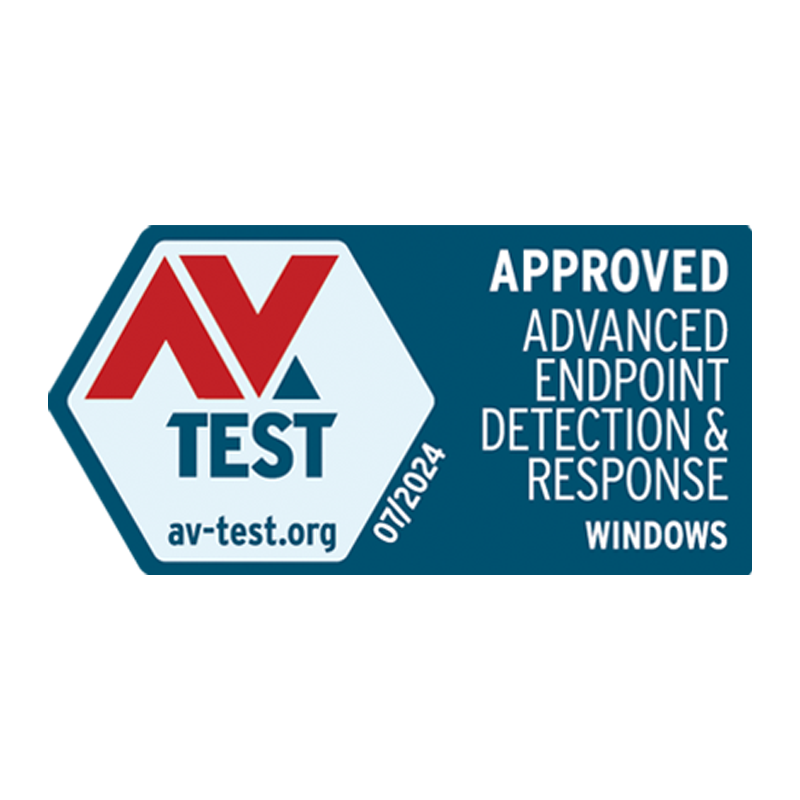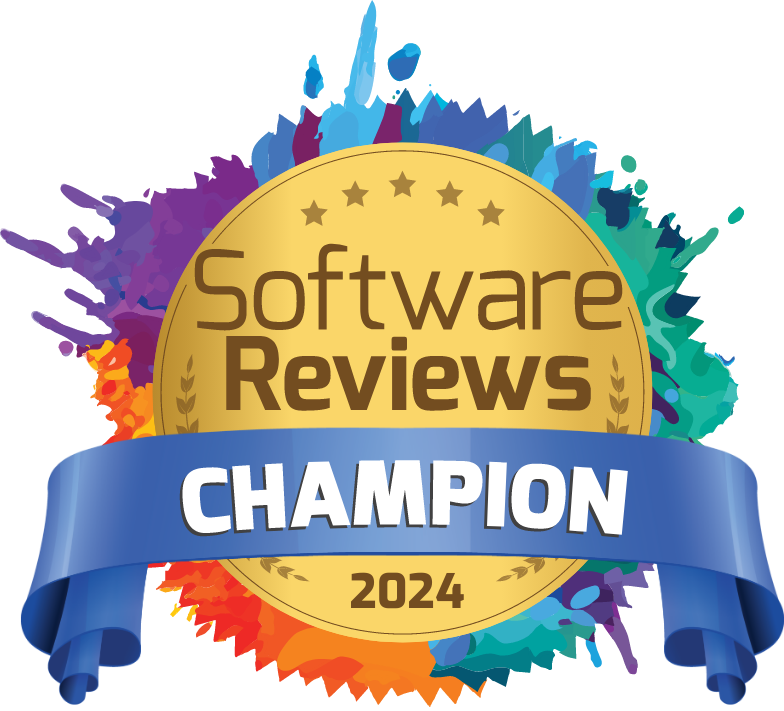Detect, investigate and mitigate suspicious activities
Test EDR
30 days. Completely Free.
EDR in Action: Detect, Respond, and Adapt to Modern Threats
In today’s digital landscape, threats lurk around every corner, and traditional defenses often fall short. That’s where Endpoint Detection and Response (EDR) steps in—think of it as your organization’s vigilant digital sentry, tirelessly scanning the horizon for signs of trouble.
EDR is not just about prevention; it’s a comprehensive approach to detect and respond to cyber threats that may have slipped past your initial defenses. It’s an intricate system that collects a vast amount of data from your network’s endpoints, analyzing it to identify suspicious activities and potential breaches. At its core, EDR is about staying one step ahead with up-to-date threat intelligence, ensuring that your security posture evolves as quickly as the threats do.
However, EDR is not a set-it-and-forget-it solution. It requires a dedicated effort to manage the volume of alerts, distinguish between real threats and false positives, and maintain continuous monitoring. It’s a commitment to safeguarding your digital domain with the right blend of technology, expertise, and processes.
Whether you’re managing EDR in-house or through a Managed Security Service Provider (MSSP), it’s crucial to understand the expertise required and the importance of a clear triage and response process. With the right setup, EDR can automate responses to threats, reducing the burden on your security teams and ensuring that your organization’s response is as swift and effective as possible.
Let WithSecure CISO Christine Bejerasco explain why your organization needs EDR now!
What are the key features of an effective EDR solution?
Real-time monitoring
Continuous monitoring of endpoint activities to identify any suspicious or malicious behavior.
Endpoint visibility
Comprehensive visibility into all endpoints, detailing processes, applications, network connections, and user activities.
Threat detection
Utilization of advanced techniques like behavior analysis, machine learning, and signature-based detection to identify potential threats.
Incident response
Capabilities for quick and effective actions such as isolating compromised endpoints, terminating malicious processes, or quarantining suspicious files.
Forensic investigation
In-depth analysis of security incidents, tracing root causes, and collecting evidence for remediation and legal purposes.
Centralized management
A single interface for monitoring all endpoints, increasing visibility and administrative oversight.
Integration with other security tools
Seamless integration with tools like SIEM solutions, threat intelligence platforms, and firewalls for comprehensive protection.
Automated response
Identifying threats without human involvement and taking immediate action to mitigate damage.
"We are in an era of relentlessly evolving and adapting cyber threats."
Businesses require proactive endpoint security that includes real-time threat detection and response and provides unparalleled visibility. Businesses can confidently defend against cyber adversaries with sophisticated analytics and threat intelligence.
Elevate your security posture and protect your business with comprehensive Endpoint Detection and Response solutions.






WithSecure EDR key benefits
Automated identification, analysis, and visibility of threats via Broad Context Detections (BCD) – Visibility not just on a single device but across all your devices
Expert assistance from our world-class threat hunters
Advanced investigation and response tooling, developed together with our enterprise-level Countercept solution
Respond to endpoint detections directly from our Elements Security Center. No need to log into individual endpoints to run tools
Identify fileless attacks with memory capture – Respond to advanced attacks
Respond or get alerted automatically when certain risk levels are reached, without the administrator needing to do anything.
Further details about the features of Elements Endpoint Detection and Response can be found in the Solution Overview document.
Things one should know before choosing EDR
Implementing an Endpoint Detection and Response (EDR) solution can be a complex process, and organizations often face several challenges:
- Insufficient Planning and Preparation: Without proper planning, EDR deployment can be ineffective. Organizations need to understand their environment and tailor the EDR solution to their specific needs.
- Lack of Endpoint Visibility: Full visibility into all endpoints is crucial for EDR to function correctly. Failing to achieve this can lead to gaps in monitoring and protection.
- Poor Configuration: Incorrectly configured EDR solutions can result in missed threats or an overwhelming number of false positives.
- Inadequate Data Collection and Analysis: EDR systems must collect comprehensive data and analyze it effectively to detect threats. Insufficient data collection can hinder this process.
- Lack of Integration: EDR solutions need to integrate with existing security infrastructure for a cohesive security posture. Challenges in integration can limit the effectiveness of the EDR system.
- Inadequate Staff Training: EDR systems are complex and require trained personnel to manage them. Lack of training can lead to mismanagement of the system.
- Failure to Regularly Monitor and Respond: Continuous monitoring and timely response are key to EDR’s effectiveness. Without them, even detected threats can cause damage.
- Managing False Positives: Distinguishing between real threats and false positives is essential. Too many false positives can overwhelm security teams and lead to alert fatigue.
- Overcoming Integration Issues: Ensuring that the EDR solution works well with other security tools is a common challenge that can affect the overall security strategy.
- Regular System Updates and Patching: Keeping the EDR solution updated with the latest patches is necessary to protect against new threats. This can be a logistical challenge for some organizations.
Addressing these challenges requires a strategic approach that includes thorough planning, staff training, and ensuring that the chosen EDR solution aligns well with the organization’s existing security infrastructure and operational demands.
Best practices for a successful Endpoint Detection and Response (EDR) deployment include:
- Assessing Security Needs: Conduct a thorough risk assessment to identify potential vulnerabilities and prioritize areas of concern.
- Defining Clear Objectives: Establish clear goals for your EDR deployment, such as improving threat detection or enhancing incident response times.
- Budget and Resource Planning: Balance cost and effectiveness by assessing budgetary constraints and resource availability for deployment and maintenance.
- Choosing the Right EDR Solution: Select an EDR solution that best fits the organization’s specific needs and integrates well with existing security infrastructure.
- Understanding the Environment: Develop a clear understanding of the organization’s environment, including endpoints, applications, and data to inform the EDR strategy.
- Comprehensive Coverage: Ensure the EDR solution covers the entire network for effective monitoring and protection.
- Staff Training: Train personnel on how to manage and respond to alerts generated by the EDR system.
- Regular Updates and Patching: Keep the EDR solution updated with the latest patches to protect against new threats.
- Integration with Other Security Tools: Seamlessly integrate the EDR with other security tools for a cohesive security posture.
- Automated Response: Set up automated responses for identified threats to reduce the burden on security teams.
These practices help ensure that the EDR system is effectively deployed, configured, and maintained, providing robust protection against cyber threats.
When implementing an Endpoint Detection and Response (EDR) system, it’s important to avoid these common mistakes:
- Insufficient Planning and Preparation: Deploying EDR without a comprehensive assessment of your organization’s needs can lead to ineffective protection.
- Lack of Endpoint Visibility: Not achieving full visibility into all endpoints can create blind spots in your security monitoring
- Poor Configuration: Incorrect or inadequate configuration can result in missed threats or an overwhelming number of false positives.
- Inadequate Data Collection and Analysis: Failing to collect comprehensive data or properly analyze it can hinder the detection of threats.
- Lack of Integration: EDR solutions need to work in concert with other security tools for a cohesive defense strategy.
- Inadequate Staff Training: Without proper training, staff may not be able to manage the EDR system effectively.
- Failure to Regularly Monitor and Respond: EDR requires continuous monitoring and timely response to detected threats.
- Underestimating the Time and Resources Required: EDR systems collect vast amounts of data that require significant resources to manage effectively.
- Managing False Positives: It’s crucial to have a process in place for distinguishing real threats from false positives to avoid alert fatigue.
- Regular System Updates and Patching: Keeping the EDR solution updated is necessary to protect against new threats and can be a logistical challenge.
By being aware of these pitfalls and taking steps to avoid them, organizations can ensure a more successful EDR implementation.
Organizations can overcome common Endpoint Detection and Response (EDR) implementation mistakes by adopting the following strategies:
- Thorough Planning: Before implementing an EDR solution, conduct a comprehensive assessment of your organization’s needs, including identifying critical assets, potential threats, and compliance requirements. Develop a detailed deployment plan that outlines goals, timelines, and resource allocation.
- Achieving Full Endpoint Visibility: Ensure the EDR solution is deployed on all endpoints, including workstations, servers, laptops, and mobile devices. Use an agent-based approach to cover all endpoints and consider integrating the EDR solution with existing endpoint management tools for enhanced visibility.
- Proper Configuration: Take the time to correctly configure the EDR solution settings. This may involve customizing the solution to fit the specific environment and threat landscape of the organization.
- Effective Data Collection and Analysis: Implement mechanisms for comprehensive data collection and invest in analytical tools that can process and make sense of the data to detect threats accurately.
- Integration with Security Infrastructure: Integrate the EDR solution with other security tools such as SIEM systems, IDS, and vulnerability management solutions. This allows for better correlation of events, contextual analysis, and improved overall security posture.
- Staff Training and Awareness: Educate employees about the risks associated with endpoint devices and the importance of EDR. Simulated phishing campaigns and gamification can help reinforce training and encourage reporting of suspicious activities.
- Regular Monitoring and Response: Establish protocols for continuous monitoring and timely response to detected threats. This includes setting up automated responses where appropriate to reduce the burden on security teams.
- Managing False Positives: Develop a process for distinguishing real threats from false positives to avoid alert fatigue. This may involve tuning the EDR system to reduce false alarms and training staff to handle alerts effectively.
- System Updates and Patching: Maintain a schedule for regular updates and patching of the EDR solution to protect against new threats. This ensures that the system remains effective against the latest cyber threats.
By addressing these areas, organizations can significantly improve the success rate of their EDR implementation and enhance their overall cybersecurity posture.
How do I get started with WithSecure Elements EDR?
1
Try Elements for 30 days
Unlock the full potential of our software with a 30-day trial. Our experts are ready to help you to get the most out of your trial!
2
Get pricing information
During the trial period, you will get no-obligation pricing information for the WithSecure Elements solutions, customized to your needs.
3
Let's find you a partner
We’ll help you find the perfect partner to get the best out of our solution.
Get your free 30-day trial now
Try Elements for 30-days, with no strings attached. You get immediate access to our award-winning Endpoint Protection and Endpoint Detection and Response solutions.
Here what’s to expect from our market-leading cyber security service:
- Install in minutes with our quick start guides
- Secure all devices 24/7 from malware
- Gain immediate visibility into your IT environment and security status
- Experience the all-in-one platform that elevates your security posture
We'll be in touch to help you get started.
Thank you for your interest in WithSecure™ Elements EDR. We’ll be in touch shortly.
Just confirm your subscription to hear more from us.
We are excited that you want to stay informed of what's cooking at WithSecure. To be a trusted partner, we follow the double-opt-in process and ask you to confirm your subscription in your email.
Unable to submit your request
Something went wrong, please try again later
Book a demo to learn more
In the meeting you will get answers to your questions and see a comprehensive overview of the solution.
You can request no-obligation pricing information for the WithSecure Elements platform, customized to your needs.
- Flexible Pricing: We provide modular pricing options, including annual licenses, monthly subscriptions, and usage-based security.
- All-in-One Platform: Elevate your security capabilities with comprehensive protection against various cyber threats, from targeted attacks to zero-day ransomware.
- Expertise Scaling: Our certified partners offer Elements as a managed service. You can also escalate tough cases to WithSecure experts or use our Co-Monitoring service.
Complete the form, and we'll be in touch as soon as possible.
Thank you
Thank you for your interest in WithSecure™ Elements EDR.
We’ll be in touch shortly.
Just confirm your subscription to hear more from us.
We are excited that you want to stay informed of what's cooking at WithSecure. To be a trusted partner, we follow the double-opt-in process and ask you to confirm your subscription in your email.